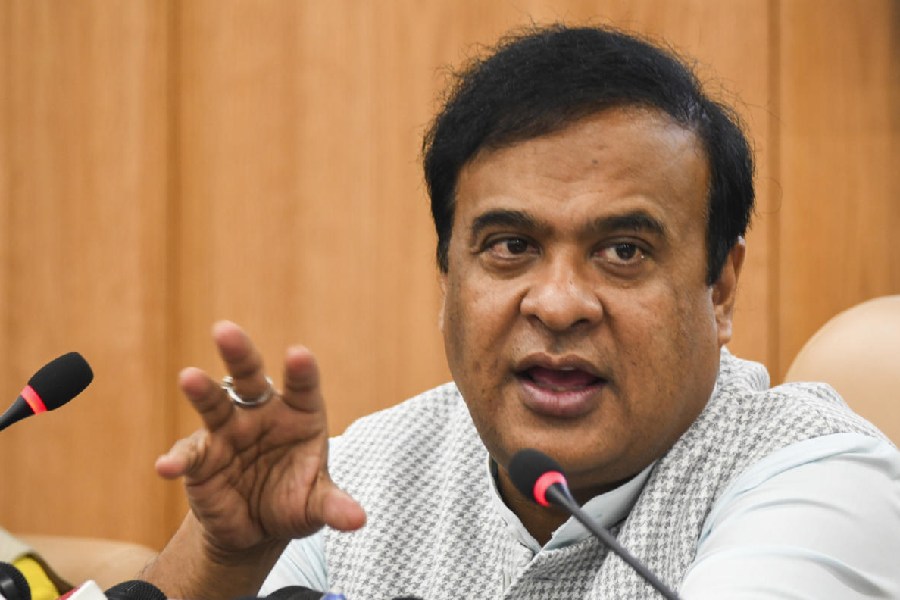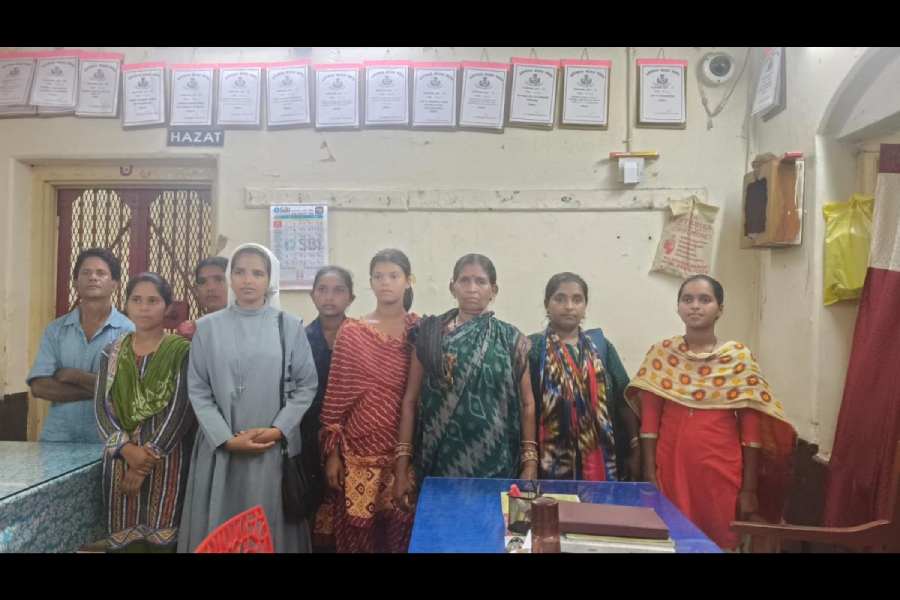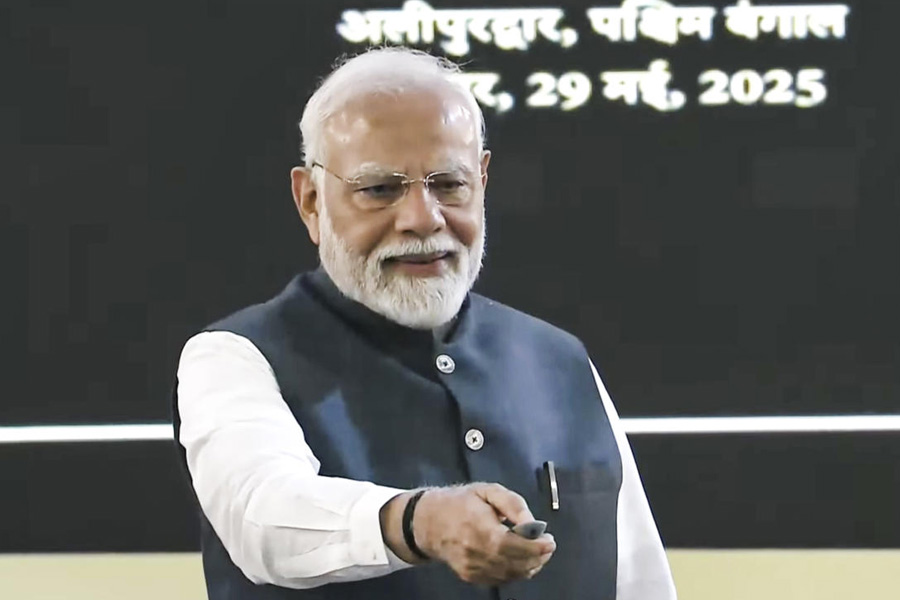 |
| Posta Rajbati as it is today. Picture by Bishwarup Dutta |
Nabab Lane sprouts from Strand Road and squeezes past the old mint complex till it hits Maharshi Debendra Road. Across the road a few yards away is an ornamental orange building with a bay jutting out — Posta Rajbati. The section behind it is adorned with double pediments, columns and rows of balconies covered with green plastic shades.
The bay thrusting out is crowned with an octagonal room (golghar) with five windows and a door on the terrace. Behind this half is the shabby older section wreathed with electrical cables and stretching to Kali Krishna Tagore Street.
The newer section painted orange is occupied by Dilip Kumar Roy, a well-preserved 62, and his nephew. The small courtyard with a thakurdalan is used as the family car park. A concrete ramp has been constructed for the cars to be driven in. The thakurdalan is ornamental. No pujas are celebrated here. The marble statue of one of the ancestors, Radha Prasad, stands here. The family deity, Shyamsundar Radharani, is worshipped in a shrine a few yards away on Ratan Sarkar Garden Street. The décor of the house is a curious mix of the old and the new, genuine and faux, marble statuary and exerciser.
Unlike the heads of many old families, Dilip has all his family documents well organised. He says they are the seventh generation of Sukhmoy Roy. The house at 24/1 MD Road is in three sections — the original (andarmahal) that is 250 years old is behind Dilip’s part. The house was divided 110 years ago between Kumar Radha Prasad Roy and Hari Prasad Roy. At that time, the premises number was 25 MD Road.
The former was apportioned the garden and the latter the older section. Dilip said years later, Radha Prasad’s descendants divided the house in 1997. The part he lives in used to be the garden.
According to Bangalar Paribarik Itihaas and another book in English on the family, of the Subarna Banik bankers who had come to Calcutta and settled there with their English friends was Lakshmikanta Dhar, the richest and most influential. His nickname was Naku Dhar. The original home of the Dhars (later known as Roy) was Saptagram.
Before the battle of Palasi, when the English were badly in need of funds, Naku Dhar was the only banker willing to offer Rs 9 lakh towards the expenses of the war. He was on best terms with Lord Clive and Warren Hastings. When the grateful Brits offered him the title Maharaja he refused it. When pressed hard, he proposed his grandson’s name for the honour. It is said that it was Naku Dhar who introduced Nabakrishna Deb of Sovabazar to Clive.
Naku Dhar had no sons but had a daughter named Parbati. Her son Sukhmoy Roy became Naku’s sole heir. He was the only Bengali director of the Bengal Bank, later the State Bank of India. The Roy family was known for its unwavering loyalty to the rulers. Sukhamoy’s descendants live in Jorasanko and Chiriamore.
The Roys have inherited Posta bazar and Dilip’s portion of the house covers 12 cottahs. The older section belonging to Hari Prasad’s descendants has been let out to several transport companies but the old courtyard is still intact. Dilip showed the plan of the CIT Scheme of 1925 to construct Kali Krishna Tagore Street when many houses that came in its way had to be demolished.











